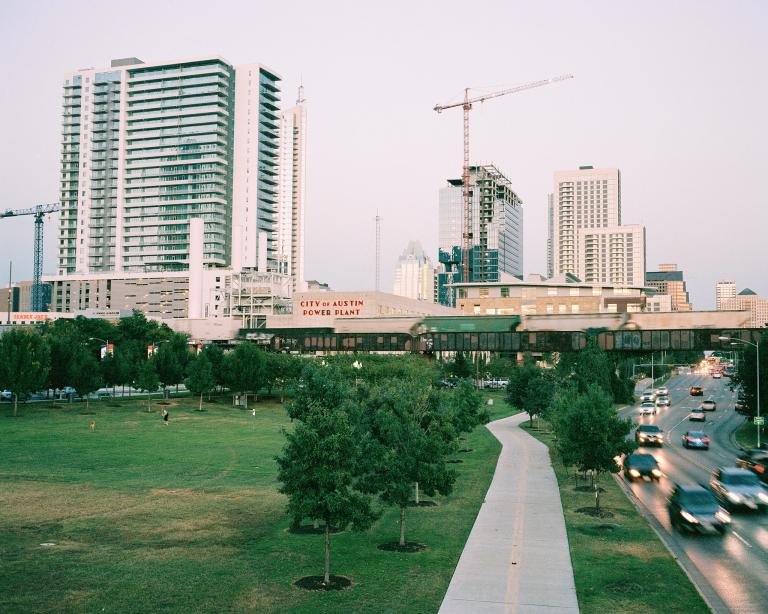Green Buildings Renew Austin’s Core

AUSTIN, This liberal-minded city likes to think of itself as unique in Texas, a blueberry in the tomato soup of red-state politics. The state capital, it is home to the University of Texas, and, on the outskirts, to the Center for Maximum Potential Building Systems, an obscure and quirkily-named nonprofit responsible for putting Austin on the map as a maverick of the green movement. Max's Pot, as the center is nicknamed, was instrumental in Austin’s experimental program to curb the energy appetite of its buildings. Pliny Fisk III, the center's founder, devised a rating system to measure how materials used in construction affect energy use. His brainstorm became the basis of Austin’s green building program, the nation’s first—and Austin went on to international acclaim after the program won an award at the United Nation’s Earth Summit in Rio in 1992. Now, 24 years out from Rio, Austin is again at the forefront as cities around the globe are reinventing themselves in order to sustain urban life in the face of population growth and climate change. Austin is part of an expanding roster of cities pledging to become “carbon neutral” by 2050—and, to get there, Austin has, without a big public drama of resistance, adopted a tough new standard that all new homes are to be rated net-zero capable, meaning they produce as much electricity as they consume. “Cities can do what countries can’t,” Fisk says, arguing that the greatest gains in the fight against climate change will be made at the local level. As conservatives in Congress who reject climate change science thwart efforts to reduce greenhouse gases and other measures, American cities are pressing ahead to shrink their carbon footprint. Nearly 2,400 city-led climate change initiatives are quietly underway from Portland to Philadelphia. These cities are reengineering streets, wiring, and sewers to limit vulnerability to drought, flash floods, and other perils of a warming earth that already bedevil nearly every large urban area worldwide. Cities are also incubators of new technology and strategies for reducing greenhouse gas emissions, including green building programs. That's because buildings are among the planet’s biggest energy guzzlers. Conventional buildings consume two-thirds of the world’s energy and produce more than a third of its carbon emissions. (That figure jumps to 40 percent in the United States.) Green buildings, on the other hand, use, on average, 30 percent less energy. Austin’s 5-star rating system is said to have been a model for LEED (Leadership in Energy and Environmental Design), today’s international standard for certifying green buildings, based on elements such as water use, energy efficiency, materials, and indoor environmental quality.

